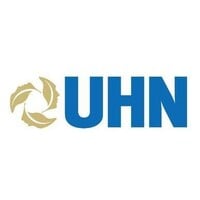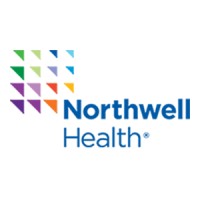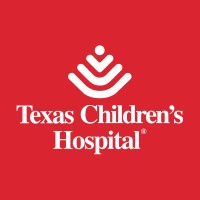Company Details
confluence-health
2,118
7,197
62
confluencehealth.org
0
CON_2975970
In-progress

Confluence Health Company CyberSecurity Posture
confluencehealth.orgAbout Us Confluence Health is an integrated, rural healthcare delivery system with two hospitals, multi-specialty care in more than 30 service lines and primary care in 12 communities across North Central Washington. Our 300+ physicians and 175+ advanced practice clinicians serve an area of approximately 12,000 square miles and cover nearly every corner of the region through specialty outreach. Mission Statement: Local care by and for our community. Our Vision: To serve our community with compassionate care through our dedication to - Enabling joy and pride in our work, - Focusing on local sustainability, - Ensuring access for all, and - Committing to excellent care and service. Core Values: • Our patients are the reason for our being, and their needs will drive all of our actions. • We will treat everyone with dignity, respect and compassion. • We will continue to innovate ways to improve the delivery of excellent, high value care. • We will measure successes and failures and use the results to drive further improvement. • We will be a good neighbor in the communities we serve with donations of time, talent, and capital. • We will be ethical and accountable in all of our decisions and actions.
Company Details
confluence-health
2,118
7,197
62
confluencehealth.org
0
CON_2975970
In-progress
Between 700 and 749

 Confluence Health Global Score (TPRM)
Confluence Health Global Score (TPRM)XXXX

Description: Confluence Health discloses patient data breach after employee email account hacked. Compromised information included some patient information including name and treatment but no financial information was believed to be at risk. An unauthorized person may have gained access to an employee’s email account on March 30 and May 28, 2018.
Description: The Washington State Office of the Attorney General reported on August 14, 2020, that the Confluence Health Foundation experienced a ransomware attack impacting 1,132 Washington residents. The breach occurred between April 18, 2020, and May 7, 2020, potentially compromising names and full dates of birth.


No incidents recorded for Confluence Health in 2025.
No incidents recorded for Confluence Health in 2025.
No incidents recorded for Confluence Health in 2025.
Confluence Health cyber incidents detection timeline including parent company and subsidiaries

About Us Confluence Health is an integrated, rural healthcare delivery system with two hospitals, multi-specialty care in more than 30 service lines and primary care in 12 communities across North Central Washington. Our 300+ physicians and 175+ advanced practice clinicians serve an area of approximately 12,000 square miles and cover nearly every corner of the region through specialty outreach. Mission Statement: Local care by and for our community. Our Vision: To serve our community with compassionate care through our dedication to - Enabling joy and pride in our work, - Focusing on local sustainability, - Ensuring access for all, and - Committing to excellent care and service. Core Values: • Our patients are the reason for our being, and their needs will drive all of our actions. • We will treat everyone with dignity, respect and compassion. • We will continue to innovate ways to improve the delivery of excellent, high value care. • We will measure successes and failures and use the results to drive further improvement. • We will be a good neighbor in the communities we serve with donations of time, talent, and capital. • We will be ethical and accountable in all of our decisions and actions.


Headquartered in Arizona, Banner Health is one of the largest nonprofit health care systems in the country. The system owns and operates 33 acute-care hospitals, Banner Health Network, Banner – University Medicine, academic and employed physician groups, long-term care centers, outpatient surgery ce

University Health Network (UHN) is Canada's largest research hospital, which includes Toronto General and Toronto Western Hospitals, Princess Margaret Cancer Centre, the Toronto Rehabilitation Institute and the Michener Institute for Education at UHN. The scope of research and complexity of cases at
As a premier care provider since 1985, Genesis HealthCare is a holding company with subsidiaries that, on a combined basis, provide services to skilled nursing facilities and senior living communities. Genesis also specializes in contract rehabilitation therapy, respiratory therapy, physician servic

Emory Healthcare is the most comprehensive health care system in Georgia. We offer 11 hospitals, the Emory Clinic, more than 250 provider locations, and more than 2,800 physicians specializing in 70 different medical subspecialties. Meaning we can provide treatments and services that may not be avai

Northwell Health is New York State’s largest health care provider and private employer, with 21 hospitals, about 900 outpatient facilities and more than 12,000 affiliated physicians. We care for over two million people annually in the New York metro area and beyond, thanks to philanthropic support

Houston Methodist is one of the nation’s leading health systems and academic medical centers. The health system consists of eight hospitals: Houston Methodist Hospital, its flagship academic hospital in the Texas Medical Center, seven community hospitals and one long-term acute care hospital through

Over the past decade we have transformed into a focused leader in health technology. At Philips, our purpose is to improve people’s health and well-being through meaningful innovation. We aim to improve 2.5 billion lives per year by 2030, including 400 million in underserved communities. We see h

Texas Children’s Hospital is a world-class pediatric facility, nationally recognized as a top children’s hospital, and voted one of the best places to work in Houston for nine years running. We’re committed to creating a healthy community for children by providing the best pediatric care possible, t
Guided by the needs of our patients and their families, Massachusetts General Hospital aims to deliver the very best health care in a safe, compassionate environment; to advance that care through innovative research and education; and, to improve the health and well-being of the diverse communitie
.png)
Apple Inc. co-founder Steve Wozniak is the headline speaker at Tech Week 2025, a six-day series that brings together educators, tech industry leaders, students...
Washington state hospital leaders say state lawmakers' proposals could force hospitals to reduce services, and some rural communities would lose some vital...
Cyber criminals are targeting health clinics and other providers outside of major hospitals in steadily increasing extortion campaigns with AI the biggest...
A joint advisory issued the week of July 8 by the Cybersecurity and Infrastructure Security Agency, National Security Agency,...
Jason Lewkowicz of Optiv celebrates the importance of mental health in cybersecurity, offering best practice tips to improve employee...
In this Help Net Security video, Jason Lewkowicz from Optiv, discusses mental health in cybersecurity, which needs more attention.
From authentication technology to chargeback mitigation tools, Israel's security-focused FinTechs are securing transactions and preventing...
A hacker who stole millions of pieces of personal information from T-Mobile allegedly did so by carrying out a cyberintrusion into the wireless carrier's East...
In a “typical” year, for many people, the thought of the holiday season brings happy feelings and warm memories.

Explore insights on cybersecurity incidents, risk posture, and Rankiteo's assessments.
The official website of Confluence Health is http://www.confluencehealth.org.
According to Rankiteo, Confluence Health’s AI-generated cybersecurity score is 723, reflecting their Moderate security posture.
According to Rankiteo, Confluence Health currently holds 0 security badges, indicating that no recognized compliance certifications are currently verified for the organization.
According to Rankiteo, Confluence Health is not certified under SOC 2 Type 1.
According to Rankiteo, Confluence Health does not hold a SOC 2 Type 2 certification.
According to Rankiteo, Confluence Health is not listed as GDPR compliant.
According to Rankiteo, Confluence Health does not currently maintain PCI DSS compliance.
According to Rankiteo, Confluence Health is not compliant with HIPAA regulations.
According to Rankiteo,Confluence Health is not certified under ISO 27001, indicating the absence of a formally recognized information security management framework.
Confluence Health operates primarily in the Hospitals and Health Care industry.
Confluence Health employs approximately 2,118 people worldwide.
Confluence Health presently has no subsidiaries across any sectors.
Confluence Health’s official LinkedIn profile has approximately 7,197 followers.
Confluence Health is classified under the NAICS code 62, which corresponds to Health Care and Social Assistance.
No, Confluence Health does not have a profile on Crunchbase.
Yes, Confluence Health maintains an official LinkedIn profile, which is actively utilized for branding and talent engagement, which can be accessed here: https://www.linkedin.com/company/confluence-health.
As of November 27, 2025, Rankiteo reports that Confluence Health has experienced 2 cybersecurity incidents.
Confluence Health has an estimated 29,963 peer or competitor companies worldwide.
Incident Types: The types of cybersecurity incidents that have occurred include Ransomware and Data Leak.
Title: Confluence Health Patient Data Breach
Description: Confluence Health discloses patient data breach after employee email account hacked. Compromised information included some patient information including name and treatment but no financial information was believed to be at risk. An unauthorized person may have gained access to an employee’s email account on March 30 and May 28, 2018.
Date Detected: 2018-03-302018-05-28
Type: Data Breach
Attack Vector: Email Account Hack
Vulnerability Exploited: Compromised Email Account
Threat Actor: Unauthorized Person
Title: Confluence Health Foundation Ransomware Attack
Description: The Washington State Office of the Attorney General reported on August 14, 2020, that the Confluence Health Foundation experienced a ransomware attack impacting 1,132 Washington residents. The breach occurred between April 18, 2020, and May 7, 2020, potentially compromising names and full dates of birth.
Date Detected: 2020-05-07
Date Publicly Disclosed: 2020-08-14
Type: Ransomware
Common Attack Types: The most common types of attacks the company has faced is Data Leak.
Identification of Attack Vectors: The company identifies the attack vectors used in incidents through Email Account.

Data Compromised: Patient Information (Name, Treatment)
Systems Affected: Email Account
Payment Information Risk: No

Data Compromised: Names, Full dates of birth
Commonly Compromised Data Types: The types of data most commonly compromised in incidents are Patient Information, Names, Full Dates Of Birth and .

Entity Name: Confluence Health
Entity Type: Healthcare Provider
Industry: Healthcare

Entity Name: Confluence Health Foundation
Entity Type: Healthcare
Industry: Healthcare
Location: Washington
Customers Affected: 1132

Type of Data Compromised: Patient Information
Sensitivity of Data: High
Personally Identifiable Information: Yes

Type of Data Compromised: Names, Full dates of birth
Number of Records Exposed: 1132

Source: Washington State Office of the Attorney General
Date Accessed: 2020-08-14
Additional Resources: Stakeholders can find additional resources on cybersecurity best practices at and Source: Washington State Office of the Attorney GeneralDate Accessed: 2020-08-14.

Entry Point: Email Account

Root Causes: Compromised Email Account
Last Attacking Group: The attacking group in the last incident was an Unauthorized Person.
Most Recent Incident Detected: The most recent incident detected was on 2018-05-28.
Most Recent Incident Publicly Disclosed: The most recent incident publicly disclosed was on 2020-08-14.
Most Significant Data Compromised: The most significant data compromised in an incident were Patient Information (Name, Treatment), names, full dates of birth and .
Most Sensitive Data Compromised: The most sensitive data compromised in a breach were Patient Information (Name, Treatment), full dates of birth and names.
Number of Records Exposed in Most Significant Breach: The number of records exposed in the most significant breach was 115.0.
Most Recent Source: The most recent source of information about an incident is Washington State Office of the Attorney General.
Most Recent Entry Point: The most recent entry point used by an initial access broker was an Email Account.
.png)
Angular is a development platform for building mobile and desktop web applications using TypeScript/JavaScript and other languages. Prior to versions 19.2.16, 20.3.14, and 21.0.1, there is a XSRF token leakage via protocol-relative URLs in angular HTTP clients. The vulnerability is a Credential Leak by App Logic that leads to the unauthorized disclosure of the Cross-Site Request Forgery (XSRF) token to an attacker-controlled domain. Angular's HttpClient has a built-in XSRF protection mechanism that works by checking if a request URL starts with a protocol (http:// or https://) to determine if it is cross-origin. If the URL starts with protocol-relative URL (//), it is incorrectly treated as a same-origin request, and the XSRF token is automatically added to the X-XSRF-TOKEN header. This issue has been patched in versions 19.2.16, 20.3.14, and 21.0.1. A workaround for this issue involves avoiding using protocol-relative URLs (URLs starting with //) in HttpClient requests. All backend communication URLs should be hardcoded as relative paths (starting with a single /) or fully qualified, trusted absolute URLs.
Forge (also called `node-forge`) is a native implementation of Transport Layer Security in JavaScript. An Uncontrolled Recursion vulnerability in node-forge versions 1.3.1 and below enables remote, unauthenticated attackers to craft deep ASN.1 structures that trigger unbounded recursive parsing. This leads to a Denial-of-Service (DoS) via stack exhaustion when parsing untrusted DER inputs. This issue has been patched in version 1.3.2.
Forge (also called `node-forge`) is a native implementation of Transport Layer Security in JavaScript. An Integer Overflow vulnerability in node-forge versions 1.3.1 and below enables remote, unauthenticated attackers to craft ASN.1 structures containing OIDs with oversized arcs. These arcs may be decoded as smaller, trusted OIDs due to 32-bit bitwise truncation, enabling the bypass of downstream OID-based security decisions. This issue has been patched in version 1.3.2.
Suricata is a network IDS, IPS and NSM engine developed by the OISF (Open Information Security Foundation) and the Suricata community. Prior to versions 7.0.13 and 8.0.2, working with large buffers in Lua scripts can lead to a stack overflow. Users of Lua rules and output scripts may be affected when working with large buffers. This includes a rule passing a large buffer to a Lua script. This issue has been patched in versions 7.0.13 and 8.0.2. A workaround for this issue involves disabling Lua rules and output scripts, or making sure limits, such as stream.depth.reassembly and HTTP response body limits (response-body-limit), are set to less than half the stack size.
Suricata is a network IDS, IPS and NSM engine developed by the OISF (Open Information Security Foundation) and the Suricata community. In versions from 8.0.0 to before 8.0.2, a NULL dereference can occur when the entropy keyword is used in conjunction with base64_data. This issue has been patched in version 8.0.2. A workaround involves disabling rules that use entropy in conjunction with base64_data.

Get company history
















Every week, Rankiteo analyzes billions of signals to give organizations a sharper, faster view of emerging risks. With deeper, more actionable intelligence at their fingertips, security teams can outpace threat actors, respond instantly to Zero-Day attacks, and dramatically shrink their risk exposure window.
Identify exposed access points, detect misconfigured SSL certificates, and uncover vulnerabilities across the network infrastructure.
Gain visibility into the software components used within an organization to detect vulnerabilities, manage risk, and ensure supply chain security.
Monitor and manage all IT assets and their configurations to ensure accurate, real-time visibility across the company's technology environment.
Leverage real-time insights on active threats, malware campaigns, and emerging vulnerabilities to proactively defend against evolving cyberattacks.




